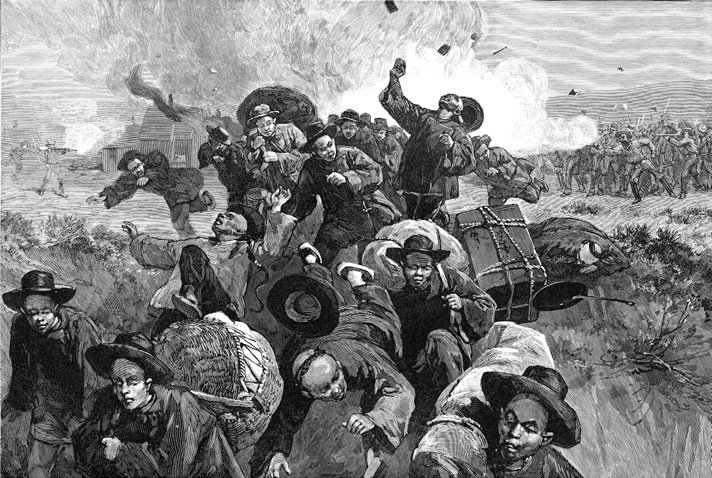The Chinese
Explore
See Document 15.4 for a list of demands from the White Caps.
California and the far West also attracted a large number of Chinese immigrants. Migration to California and the West Coast was part of a larger movement in the nineteenth century out of Asia that brought impoverished Chinese to Australia, Hawaii, Latin America, and the United States. The Chinese migrated for several reasons in the decades after 1840. Economic dislocation related to the British Opium Wars (1839–1842 and 1856–1860), along with bloody family feuds and a decade of peasant rebellion from 1854 to 1864, propelled migration. Faced with unemployment and starvation, the Chinese sought economic opportunity overseas.
Chinese immigrants were attracted first by the 1848 gold rush and then by jobs building the transcontinental railroad. By 1880 the Chinese population had grown to 200,000, most of whom lived in the West. San Francisco became the center of the transplanted Chinese population, which congregated in the city’s Chinatown. Under the leadership of a handful of businessmen, Chinese residents found jobs, lodging, and meals, along with social, cultural, and recreational outlets. Most of those who came were young unmarried men who intended to earn enough money to return to China and start anew. The relatively few women who immigrated came as servants or prostitutes.
For many Chinese, the West proved unwelcoming. When California’s economy slumped in the mid-1870s, many whites looked to the Chinese as scapegoats. White workingmen believed that Chinese laborers in the mines and railroads undercut their demands for higher wages. They contended that Chinese would work for less because they were racially inferior people who lived degraded lives. Anti-Chinese clubs mushroomed in California during the 1870s, and they soon became a substantial political force in the state. The Workingmen’s Party advocated laws that restricted Chinese labor, and it initiated boycotts of goods made by Chinese people. Vigilantes attacked Chinese in the streets and set fire to factories that employed Asians. The Workingmen’s Party and the Democratic Party joined forces in 1879 to craft a new state constitution that blatantly discriminated against Chinese residents. In many ways, these laws resembled the Jim Crow laws passed in the South that deprived African Americans of their freedom following Reconstruction (discussed in chapter 16).

Pressured by anti-Chinese sentiment on the West Coast, the U.S. government enacted drastic legislation to prevent any further influx of Chinese. The Chinese Exclusion Act of 1882 banned Chinese immigration into the United States and prohibited those Chinese already in the country from becoming naturalized American citizens. The exclusion act, however, did not stop anti-Chinese assaults. In the mid-1880s, white mobs drove Chinese out of Eureka, California; Seattle and Tacoma, Washington; and Rock Springs, Wyoming. These attacks were often organized. In 1885, the Tacoma mayor and police led a mob that rounded up 700 Chinese residents and forced them to leave the city on a train bound for Portland.
REVIEW & RELATE
What migrant groups were attracted to the far West? What drew them there?
Explain the rising hostility to the Chinese and other minority groups in the late-nineteenth-century far West.
Exploring American HistoriesPrinted Page 506
Exploring American Histories Value EditionPrinted Page 376
Chapter Timeline